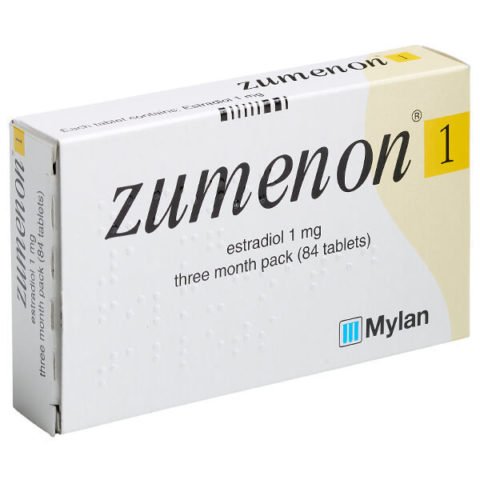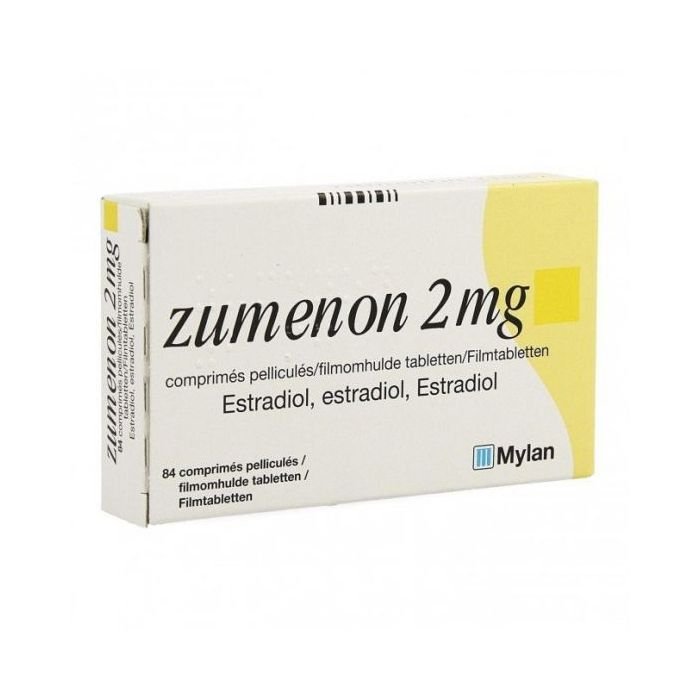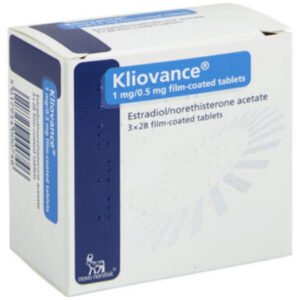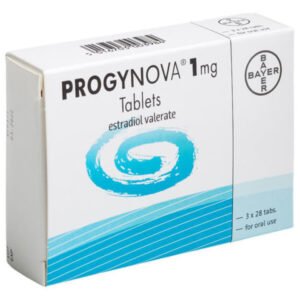What is Zumenon?
How does it work?
What are the benefits of taking it?
Zumenon is an HRT pill that contains a form of estrogen called estradiol. Women who have had a hysterectomy (had surgery to remove their uterus) can take it alone, but women who have not had this procedure will take it along with progesterone.
This HRT is used to alleviate menopausal symptoms such as:
- Hot flushes
- Night sweats
- Depression
- Vaginal discomfort (irritation, itching, pain during sexual intercourse)
- Anxiety, mood swings
- Difficulty falling asleep or staying asleep
- Dry eyes or mouth
- Loss of libido (sexual desire)
- Prevents Osteoporosis.
How do I use it and its dosage?
Always use this menopause treatment medicine exactly as your doctor or pharmacist has told you. If in doubt, consult your doctor or pharmacist again. Your doctor will prescribe the lowest possible dose to treat symptoms for the minimum time. Consult your doctor if you think the prescribed dose is too high or too low.
The recommended dose is:
Treatment for symptoms of estrogen deficiency in postmenopausal women:
In general, your doctor will prescribe half a tablet of Zumenon once a day at the beginning of the treatment. If you consider it necessary (for example, the desired results are not obtained after 3 months), your doctor may adjust the dose.
Women with a uterus:
Prolonged use of estrogens without the addition of progestogens increases the risk of endometrial cancer in women with a uterus. Estrogens should be taken with progestogen tablets for at least 12 days a month to reduce this risk.
Two different treatments can be prescribed:
Cyclical treatment:
Take half or 1 tablet of Zumenon daily for 21 days (3 weeks), followed by a 7-day break.
Generally, your doctor will also prescribe treatment with a hormone called progestins. You will need to take your progestogen tablets for the last 12-14 days of the 21 estrogen cycle. In the fourth week, when you are not taking any medications, you will also not be taking progestogens. During the rest of the treatment, bleeding from deprivation (menstruation) may occur.
Continuous treatment:
Take half or 1 tablet of Zumenon every day without interruption.
Generally, your doctor will also prescribe another hormone called progestins.
You should take the progestogen tablets during the last 12-14 days of the month. Deprivation bleeding (menstruation) may occur during the treatment when estrogens are administered in combination with progestogens.
Women without a uterus:
Unless you have a condition in which cells from the wall of the uterus come out of the uterus (endometriosis), estrogen treatment should not be given together with progestins if your uterus has been removed. Take half or 1 tablet of Zumenon once a day without interruption.
The tablet can be broken into equal doses by placing the tablet on a firm surface with the marks facing down and pressing it down.
If you use Zumenon for the treatment of menopausal symptoms and you find that the effects of Zumenon are too strong or weak, consult your doctor.
Side effects & precautions
Like all medicines, this medicine can cause side effects, although not everybody gets them. The following diseases have been reported to occur more frequently in women using HRT:
- Breast cancer
- Abnormal growth or cancer of the internal wall of the uterus (endometrial hyperplasia or cancer).
- Ovarian cancer.
- Blood clots in the veins of the legs or lungs (venous thromboembolism).
- Heart disease.
- Stroke
- Probable memory loss if HRT has started after age 65.
Other serious side effects:
Swelling of the face, lips, mouth, tongue, or throat (angioneurotic edema).
If you experience any of the aforementioned symptoms, stop taking Zumenon immediately, and seek medical help as soon as possible.
Breast tenderness is the side effect that has been most frequently reported with estradiol treatment.
The following side effects have been reported with Zumenon:
Common: may affect more than 1 in 10 people
- Weight gain or decrease.
- Sleep disorders, headaches.
- Nausea, abdominal pain.
- Skin rashes, itching.
- Uterine / vaginal bleeding, including spotting, irregular vaginal bleeding, abnormal and prolonged menstrual bleeding.
- White, yellowish, or greenish slimy vaginal discharge (leucorrhea).
Uncommon: may affect up to 1 in 100 people
- Hypersensitivity
- Depression, depressed mood.
- Dizziness
- Vision disorders
- Feeling of agitation in the chest (palpitations).
- Venous obstruction by a blood thrombus.
- Flatulence, indigestion.
- Erythema nodosum (a form of skin rash with painful blue and red nodules), hives.
- Breast tenderness, breast pain.
- Vaginal yeast infection.
- Fluid retention.
Rare: may affect up to 1 in 1,000 people
- Increased blood glucose levels (glucose intolerance).
- Anxiety
- Changes in sexual desire.
- Migraine
- Intolerance to contact lenses.
- Increased blood pressure.
- Vomiting, feeling of fullness in the upper abdomen.
- Gallbladder stones, gallbladder disease, abnormal liver function tests.
- Excessive hair growth, acne.
- Muscle cramps.
- Painful menstruation, vaginal discharge, premenstrual-like syndrome, enlarged breasts.
- Fatigue
Other side effects that may occur during estradiol treatment are:
- Hair loss
- Fibroids (Benign growth of tissue within the uterus).
- Pain in the extremities.
- Tachycardia or other cardiac symptoms.
- Brittle or painful veins.
- Bleeding from the nose
Other side effects that appear with hormone replacement therapies are:
- Skin or subcutaneous disorders such as:
- Chloasma (patches of yellowish-brown pigmentation, also called “pregnancy spots”).
- Erythema multiforme (a form of skin rash with sores, blisters, and fluid buildup).
- Vascular purpura (small bleeding spots on the skin).
- Cholestatic jaundice.
- Diarrhea
- Eye dryness.
- Changes in the composition of the tear film.







Reviews
There are no reviews yet.